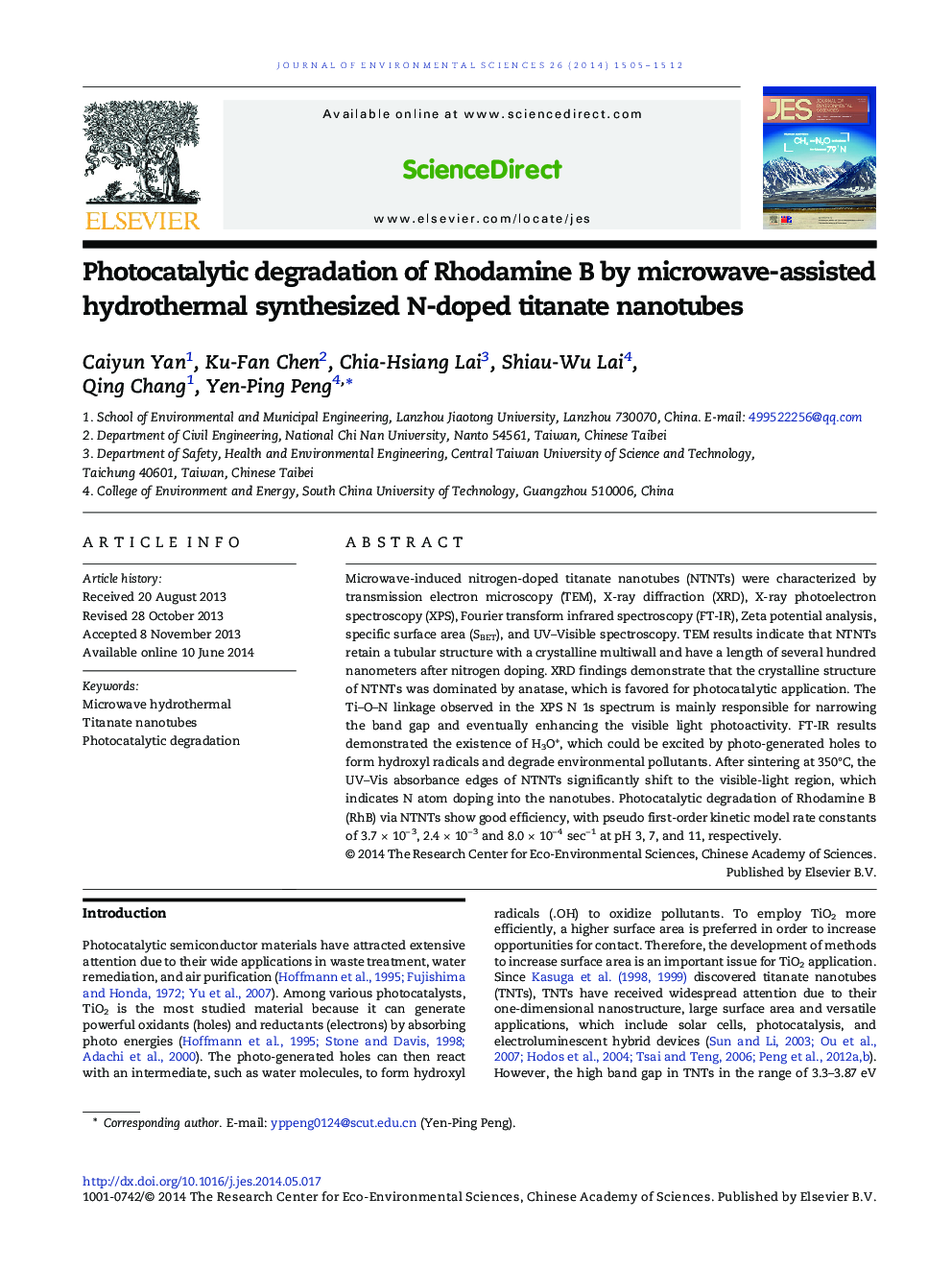| Article ID | Journal | Published Year | Pages | File Type |
|---|---|---|---|---|
| 4454501 | Journal of Environmental Sciences | 2014 | 8 Pages |
Microwave-induced nitrogen-doped titanate nanotubes (NTNTs) were characterized by transmission electron microscopy (TEM), X-ray diffraction (XRD), X-ray photoelectron spectroscopy (XPS), Fourier transform infrared spectroscopy (FT-IR), Zeta potential analysis, specific surface area (SBET), and UV–Visible spectroscopy. TEM results indicate that NTNTs retain a tubular structure with a crystalline multiwall and have a length of several hundred nanometers after nitrogen doping. XRD findings demonstrate that the crystalline structure of NTNTs was dominated by anatase, which is favored for photocatalytic application. The Ti–O–N linkage observed in the XPS N 1s spectrum is mainly responsible for narrowing the band gap and eventually enhancing the visible light photoactivity. FT-IR results demonstrated the existence of H3O+, which could be excited by photo-generated holes to form hydroxyl radicals and degrade environmental pollutants. After sintering at 350°C, the UV–Vis absorbance edges of NTNTs significantly shift to the visible-light region, which indicates N atom doping into the nanotubes. Photocatalytic degradation of Rhodamine B (RhB) via NTNTs show good efficiency, with pseudo first-order kinetic model rate constants of 3.7 × 10− 3, 2.4 × 10− 3 and 8.0 × 10− 4 sec− 1 at pH 3, 7, and 11, respectively.
